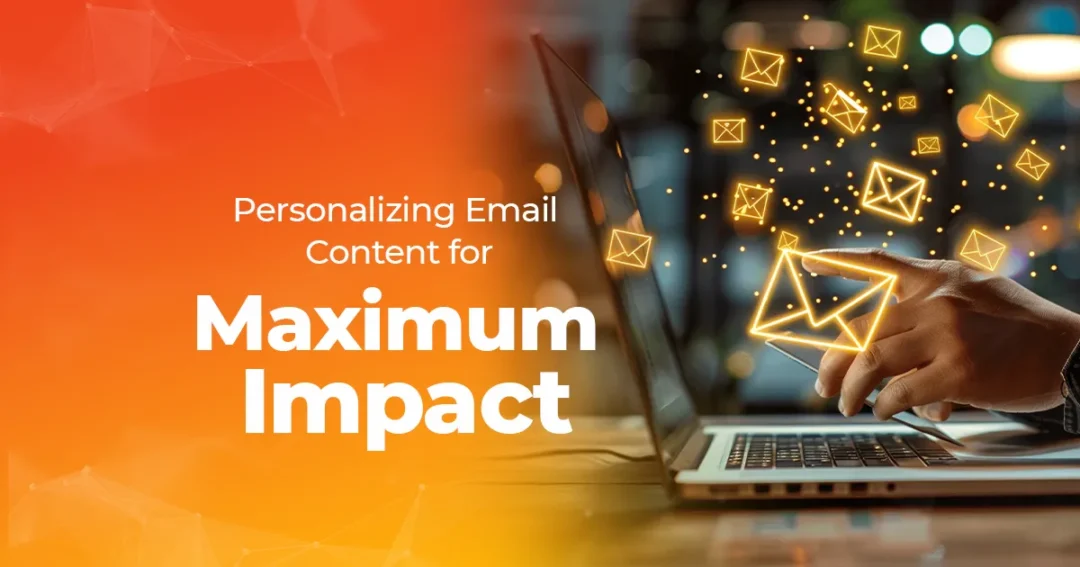Getting Started with Email Personalization
Email marketing is still one of the most effective ways for businesses to connect with their audience. But in a sea of emails, how do you make yours stand out? That’s where email personalization comes in. It’s all about customizing your email content to fit the unique preferences, behaviors, and past interactions of each subscriber. By creating a more tailored experience, brands can boost engagement, foster stronger relationships, and ultimately drive better conversions.
Personalizing emails goes beyond just adding the recipient’s name in the subject line or greeting. It’s about sending the right message to the right person at just the right moment. By analyzing email campaign performance and tapping into customer data, businesses can design personalized experiences that feel relevant and engaging.
Gathering the Right Data for Personalization
The foundation of personalization is data. To deliver content that truly resonates, you need to gather the right information first. This includes demographic details like names, birthdays, and locations, as well as behavioral insights such as past purchases, browsing habits, and email interactions.
Here are some essential data sources for effective personalization:
- Basic demographic information: Age, gender, and where they live.
- Behavioral data: Email open rates, click-through rates, website activity, and product preferences.
- Transactional data: Previous purchases, cart abandonment, or how often they interact.
- Survey responses: Customer feedback can highlight their interests or challenges.
By diving into this data, marketers can gain a deeper understanding of their audience and craft emails that cater to their specific needs, significantly enhancing the relevance and engagement of their email campaigns.
Dynamic Content Tailored to Individual Preferences
Dynamic content is a game-changer in the world of personalized email marketing. It lets you craft a single email template that can showcase various versions, all tailored to the recipient’s preferences or behaviors.
For instance:
A clothing retailer can display different products based on what customers have bought before or what they’ve browsed.
A travel agency can suggest vacation spots that align with previous bookings or interests.
Using dynamic content is a smart way to send out highly relevant emails that can boost engagement rates, all without the hassle of creating separate emails for each audience segment.
Personalized Subject Lines and CTAs
- Personalized Subject Lines: A catchy, personalized subject line grabs attention and increases the likelihood of the email being opened. Incorporating the recipient’s name or mentioning their past actions (like a recent purchase) can make the subject line feel more customized. For example:“Hey [Name], Check Out These New Items You’ll Love!”“Your [Product] is Back in Stock!”
- Customized CTAs: Adjusting CTAs based on customer behavior can also elevate conversion rates. Instead of using generic phrases like “Shop Now,” try personalized options like:”Complete Your Purchase, [Name]!””Discover What’s New for You!”
This kind of personalization speaks directly to the recipient’s interests, encouraging them to take action.
Email Personalization Tools
- Mailchimp: Provides personalized email campaigns based on audience data.
- HubSpot: This is a comprehensive marketing automation platform that excels in advanced segmentation and personalization.
- ActiveCampaign: It offers behavior-driven triggers that enable you to create highly personalized email sequences.
- Klaviyo: Perfect for e-commerce businesses, it provides robust integrations with store data to enhance personalized email experiences.
With these tools at your disposal, you can effectively manage your email campaigns, craft dynamic content, and monitor performance with minimal manual effort.
Conclusion
To truly personalize your email content for maximum impact, it’s essential to understand your audience’s preferences, gather the right data, and use tools that simplify delivering tailored experiences. By combining dynamic content, personalized subject lines, and custom CTAs, you can significantly boost engagement rates and drive higher conversions. Just keep in mind that overdoing personalization can have the opposite effect, so always focus on relevance and the ethical use of customer data. By utilizing email campaign performance metrics and following best practices, you’ll not only enhance your emails for better engagement but also foster a stronger connection with your subscribers.
For best practices and Digital growth, contact Digichefs.


